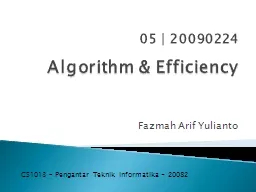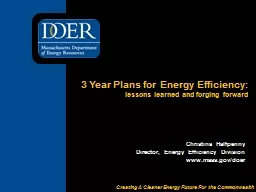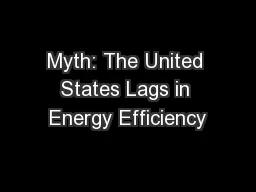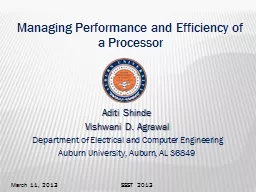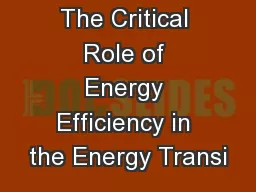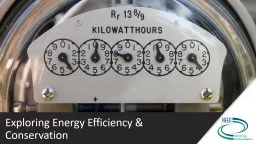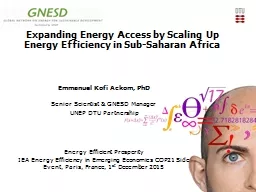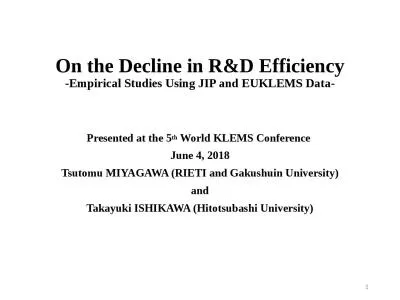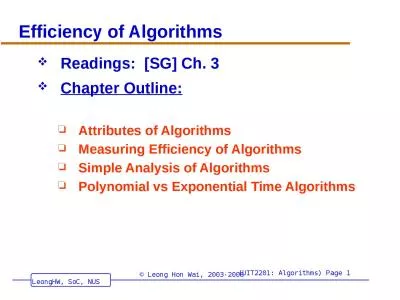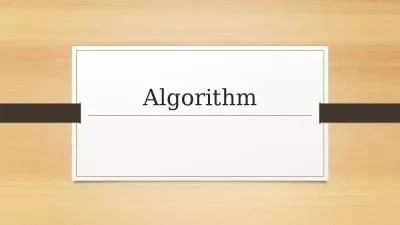PPT-05 | 20090224 Algorithm & Efficiency
Author : dardtang | Published Date : 2020-07-03
Fazmah Arif Yulianto CS1013 Pengantar Teknik Informatika 20082 Lets get serious I Pen and Paper Bagaimana kita melakukan perkalian bilangan Hafalan
Presentation Embed Code
Download Presentation
Download Presentation The PPT/PDF document "05 | 20090224 Algorithm & Efficien..." is the property of its rightful owner. Permission is granted to download and print the materials on this website for personal, non-commercial use only, and to display it on your personal computer provided you do not modify the materials and that you retain all copyright notices contained in the materials. By downloading content from our website, you accept the terms of this agreement.
05 | 20090224 Algorithm & Efficiency: Transcript
Download Rules Of Document
"05 | 20090224 Algorithm & Efficiency"The content belongs to its owner. You may download and print it for personal use, without modification, and keep all copyright notices. By downloading, you agree to these terms.
Related Documents

